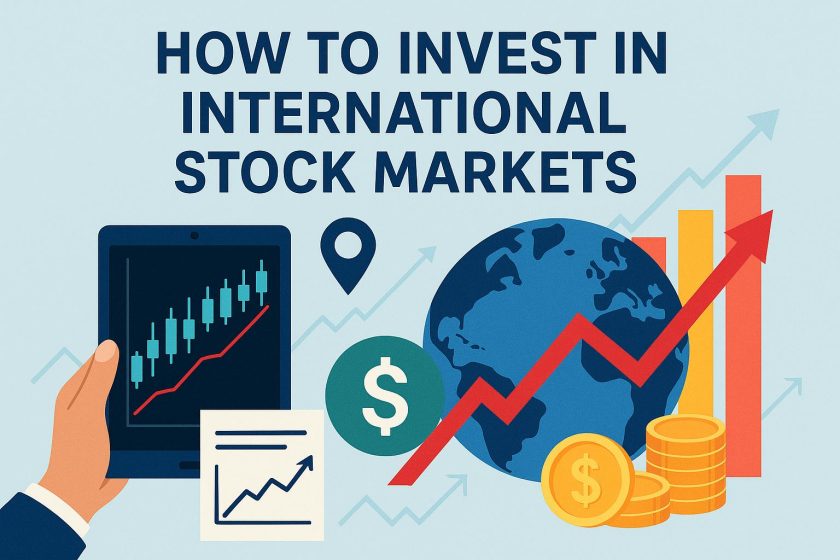Understanding International Stock Markets
Investing in international stock markets offers investors a range of advantages including diversification, exposure to various economic growth trajectories, and currency fluctuations. However, the intricate nature of these markets and the potential hurdles they present warrant careful consideration and understanding. A well-rounded perspective is crucial before making any substantial international investment decisions.
Why Invest Internationally?
International investing presents a unique opportunity to diversify investments beyond the limitations of domestic economies and market fluctuations. Each country operates at its economic cycle, and this variability can present investors with distinct growth opportunities that might not be present within their home nations. Furthermore, international venues may feature industries and sectors that are underrepresented domestically.
A diversified investment portfolio, which includes international elements, mitigates risks associated with cyclic economic changes in one’s home country. For instance, while one country’s economy may face recession, another might be experiencing growth, offering balance and stability to the investor’s portfolio.
Accessing International Markets
Investors must navigate through several pathways to engage with international stock markets:
Direct Investment: Investors can directly invest in foreign companies by purchasing stocks from international exchanges. This approach, while potentially profitable, mandates setting up a brokerage account that grants access to these markets and demands an acute understanding of the respective country’s regulatory requirements.
For savvy or seasoned investors, the direct approach provides firsthand exposure and potentially higher returns. However, it also requires investors to be well-versed in foreign corporate dynamics and possess a robust risk management strategy.
Exchange-Traded Funds (ETFs) and Mutual Funds: ETFs and mutual funds represent strategic avenues to gain international market exposure efficiently. These investment vehicles are composed of a collection of securities within a specific region, country, or sector, aligning with investors’ objectives.
This strategy benefits investors by instantly achieving diversification, reducing the volatility associated with individual stocks. ETSs and mutual funds also provide an easier entry point for inexperienced investors, allowing them to participate in global markets with lower costs and reduced complexity.
American Depository Receipts (ADRs): ADRs facilitate investment in foreign companies through U.S. exchanges. These are securities that represent ownership in shares of a foreign company, offering a stable and straightforward method for U.S. investors to partake in international markets.
The significant advantage of ADRs lies in their convenience, combining the benefits of foreign equity exposure with the simplicity and regulatory familiarity of trading on U.S. exchanges.
Risks and Considerations
Investing across borders introduces multiple inherent risks:
Currency Risk: The constant fluctuations in currency exchange rates can significantly affect the value of foreign investments. An investment might perform well in local terms, yet its returns could diminish when converted back to the investor’s home currency.
For instance, suppose an investor from the U.S. holds assets in a country whose currency depreciates against the dollar; they might face a nominal loss upon conversion despite local gains.
Political and Economic Risks: The political and economic landscapes of foreign countries can be unpredictable and varied. Political instability, policy shifts, or economic crises can adversely affect market performance, potentially leading investors to incur losses.
Therefore, comprehensive political and economic understanding is crucial. Investors must be well-informed of the current and anticipated conditions within the countries they are investing in.
Regulatory Differences: Diverse regulatory frameworks across countries can impact aspects such as corporate governance, market transparency, and investor protections. What may be considered the norm in one country could differ substantially in another.
Investors must familiarize themselves with these differences to mitigate risks associated with compliance and legal exposures. It’s crucial to understand how these regulations could affect investment outcomes to prepare adequately and navigate potential issues.
Research and Due Diligence
Performing thorough research is a cornerstone of successful international investment. This encompasses assessing the economic outlook of targeted countries, understanding crucial industries, and identifying growth drivers vital to those economies.
By consulting reputable financial news outlets, utilizing professional market analysis tools, and seeking advice from seasoned investment professionals, investors can gather insights critical to informed decision-making. Resources such as Bloomberg and Financial Times are instrumental in delivering current, detailed information on global market trends and analyses.
An intelligent approach includes understanding both the macroeconomic factors and microeconomic conditions—knowing industry specifics and broader economic indicators that provide a nuanced view of potential investments.
Conclusion
Incorporating international investments into a diversified portfolio can be advantageous. By gaining a comprehensive understanding of access methods, recognizing potential risks, and engaging in diligent research, investors can effectively integrate into the global economic landscape. This preparedness allows investors to leverage diverse growth opportunities while safeguarding their investments against undue risks.
The fusion of strategic tools, knowledge, and vigilant market observation can empower investors to capitalize on the multifaceted aspects of international stock markets, potentially leading to lucrative and stabilized financial portfolios.
This article was last updated on: October 9, 2025
